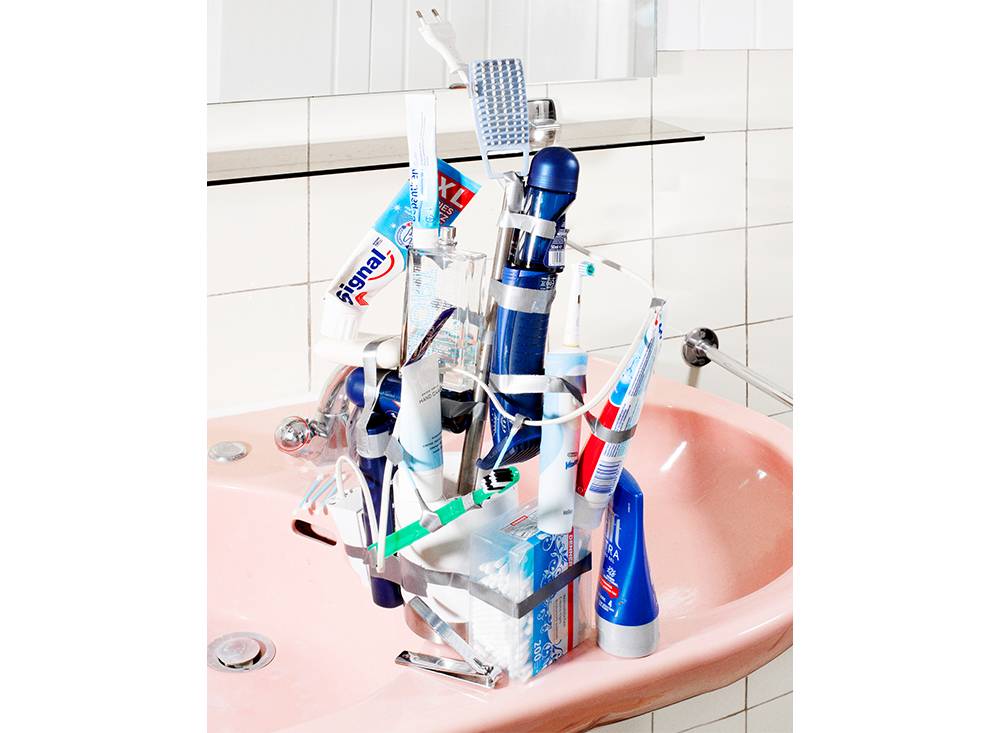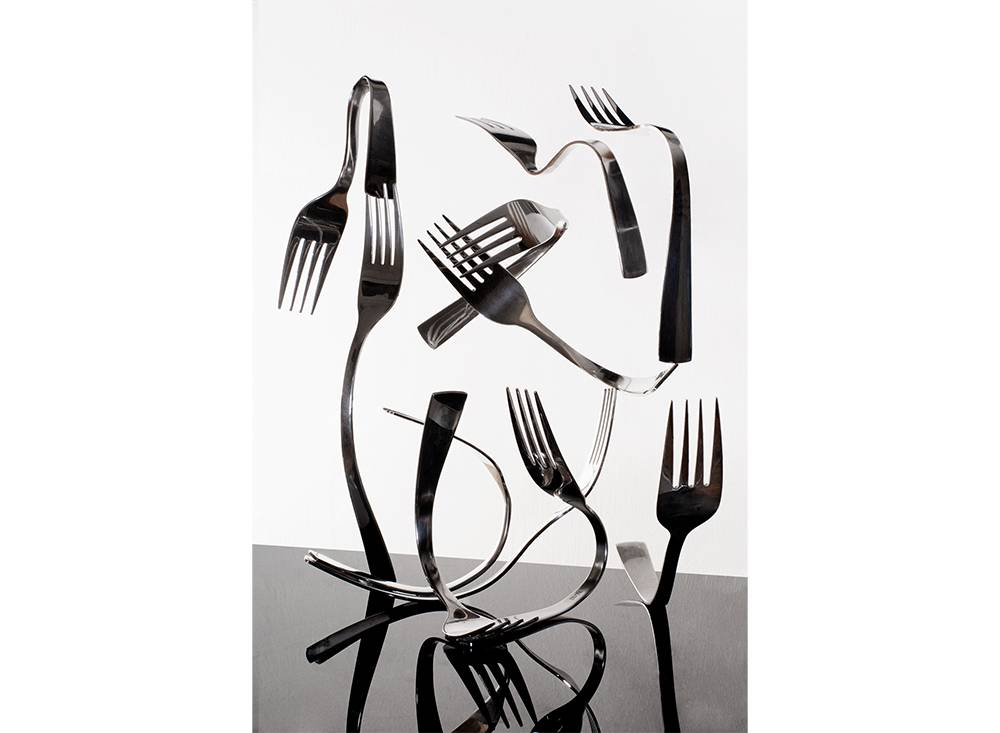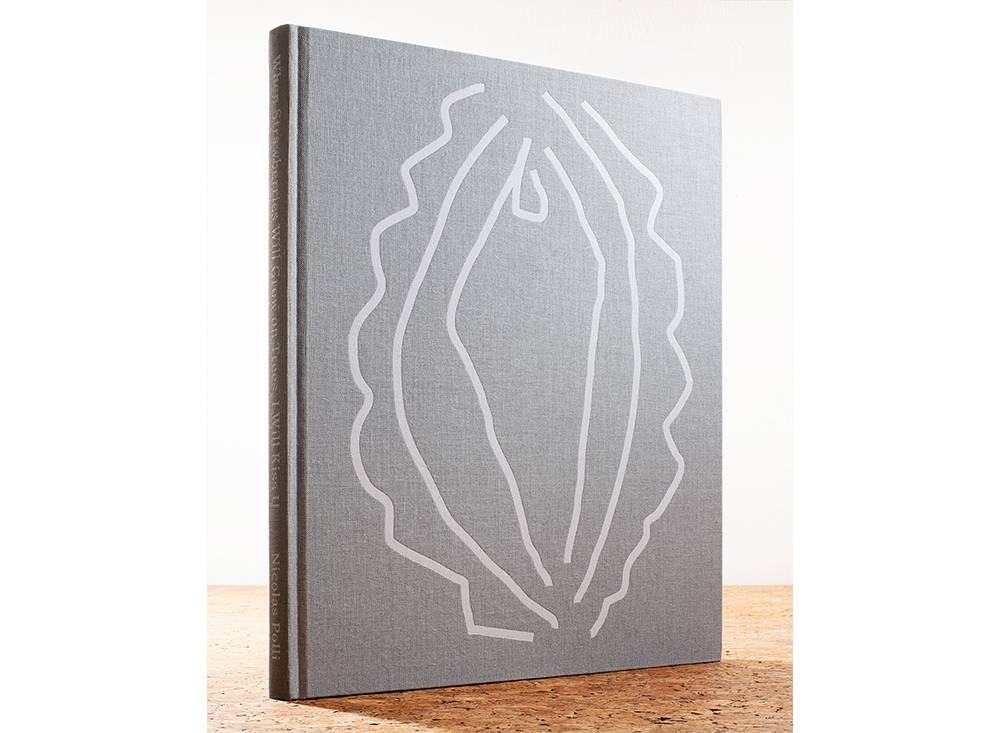Emotional outburst through a zucchini. Interview with photographer and graphic designer Nicolas Polli
Swiss photographer, publisher and graphic designer Nicolas Polli has a magnificent style, bold contrasts and emotional attached compositions in his still life creations. In 2012 Nicolas and Salvatore Vitale founded YET Magazine, which later became the recipient of the Swiss Design Award. After his studies in Art direction at ECAL in Lausanne, Polli found his own publishing house CIAO PRESS, which became a laboratory to push his ideas even further and work with photographers, artists and designers with a similar approach and fresh energy. Nicolas told us about his garden in Biel/Bienne, lack of rules and why he never looked for clients himself. He has almost revealed the secrets of a perfect still life, but, you know, how rotten your aubergine is – is only a tiny part of the perfect composition.
Creative work is known to be accompanied by a lot of questioning and doubts. Where do you find motivation and inspiration to move forward in difficult times?
Oh, I struggle every day and right now my working days are very chaotic. As I’m a graphic designer, photographer, teacher and a publisher every day brings completely different challenges. You’re interviewing me in a moment where I have a lot of personal conflicts and I don’t really feel 100% like myself. I was really close to a burnout recently. At the moment it’s really hard to find motivation to continue, it’s rather motivation to finish things. But if I put more positive perspective then motivation comes from waking up and do exactly what I want in my work. I have a lot of freedom, and my new projects in photography and graphic design are my main motivation. Since I moved to Biel nothing but being in this place motivates me. I really enjoy to wake up, light a fire, drink coffee and go into the woods. I have a garden, I make a lot of pizza, greet people and clients. So I look at my work not really as a work, but more as a practice and experience without much pressure.

What makes you work most effectively and what’s the driving force in your work process? Is discipline important for you?
What does discipline even mean? I have zero rules in my work, I’m really chaotic. I try to give myself more aesthetically rules, but when it comes to daily routine and work I don’t have any of those. I just try to do how I feel. I’m really emotional in my work and cannot bring rules there. I really don’t want to have a balance because it creates ordinary things and I don’t want to be ordinary. Of course, certain people need to find balance to create, it’s also absolutely normal, but for me not being able to plan your life is my rule. I’m more an artist in a way of working than a graphic designer. My driving force is passion.

Was it easy for you to get your first commissioned work? Did you put a lot of effort to get new clients or came it out naturally?
I think I’ve been crazy lucky. During my studies I was already pretty motivated discovering things outside of the school boundaries. That time in 2012 I created YET Magazine with a friend. The reason was a huge love for photography and desire to create and to understand how to do things alongside, not just being a photographer and trying to become famous, but to give something to the world of art. Even though this project sucked a lot of energy out from me, it also became my vector to find clients. The Magazine was a reason why I was getting request from people who wanted to work with me during my studies. Since then I’ve never looked for clients. Social media also play a big role – I’m receiving a lot of requests now because of Instagram. So I’ve never really had a struggle with that.

Any tips for creatives?
I always tell my students to not pretend just because you’re a good photographer or a designer everybody is gonna be looking for you. It’s not the case, no one knows you. Create yourself a visibility through projects, through things you’re doing for free – all of this develops your knowledge of photography and graphic design, which is really important. So I recommend to create your own things, especially in safe school frames, where you can make a lot of mistakes. You can really profit from studies, especially when you don’t have any financial stability you can use that moment to bring new kind of energy. In my case studies gave me a lot of visibility and clients.

Do you think idols are important, and if so, who are yours?
Oh my god, yes, I’m a groupie, I love idols. Finding good works around is what motivates me. When I see a beautiful book or picture, I want to know how it’s done and do it right away. One of my biggest idols is actually a friend now, I treat him like a rock star and we also drink beer sometimes. It’s a graphic designer from Zurich Urs Lehni. It’s because of him I discovered that making books is actually an amazing journey. Just by looking at what he is doing, I learned how much fun and joy could be in my work as well. Regarding the photography world that’s a little bit different. I’ve never really had idols. I have, of course, people whose work I enjoy, but I don’t think that I have someone in front of whom I become very tiny and small.
Do you think the mindset of an artist changes with success, fame or money?
No. The only thing that changes is if you have money, you can buy a Ferrari and move faster, and, of course, you have less time to create things. Having success is an amazing thing because it’s an obvious result of what you have done, but at the same time, it’s also a lot of energy that you are losing, like being nice, going to events or giving interviews. If you are super strong in your head, then it’s great, but if you’re fragile then it’s pretty hard to manage success, because along with it comes a lot of toxic criticism which can gradually kill your work. A lot of expectations come with it and I don’t really feel I have succeeded. I’m in that stage when interest just grows in what I’m doing. But what is success then? It’s just when other photographers or designers look at your work and say some nice things? It’s not success for me.

If there was anything you could change about the creative industries, what would it be?
Hard to say. A little more knowledge wouldn’t hurt. I sometimes feel that what we do is mostly masturbation between each other, where we do good graphic design only for other graphic designers, which is pointless. Would be nice if we, as a society, get better at what good taste is. The photography world is trying to change in a good way to be more inclusive and represent more culture. I think more inclusivity would be great, the attention to it grows, but sometimes it all looks fake.
Also when I get the requests for exhibitions, it’s around nine from men and only one from women, who are sometimes still afraid of promoting themselves. It obviously happens because of the fact that educational facilities have not paid much attention to equality, only since recently. If this changes, it would bring another perspective of how you as a woman feel about the industry and how you would push yourself forward.

Which are the issues you prefer to address within your works?
My issues just come out of my way of thinking. As a publisher what I’m trying to do right now is to publish more projects by women, but it’s not because they are women, it’s about really strong projects I got. I’m trying to be aware that gender inequality really exists and I do what I can do to improve the situation. As a photographer, I speak quite loud about toxic masculinity, how we as men should show emotions and perceive ourselves not as fragile, but as strong individuals. Of course, my entire career is not based on that, I just feel that as a human I encounter certain elements that make me reflect. Therefore I try to augment what I’m learning and what I’m growing with into what I do, but I don’t feel strong enough to put myself into categories just because I have some power and I have to use it. I’m just doing it in my little way, cause I feel that it’s what I can do at the moment.

What is your perfect Photo Book?
Mine ha ha. A perfect photo book is when I look at it and don’t think. When the object intrigues me I open it and actually from page to page I’m fascinated by its design, by the humanity which is inside. But just the fact that you’re not able to put any characteristics in it and can perceive the book only through emotions makes it perfect in a certain way. I don’t feel that there are any elements that define it. Something is perfect just because you cannot understand why. It’s like love – you cannot say what makes it perfect.

So the content is more important than the design?
Not necessarily, it depends. It’s always the connection between the two. If content and design were a couple, maybe in a certain couple one is stronger than the other one and it’s fine. But there are other situations when two are really dancing together and then graphic design is empowered by photography or photography is empowered by graphic design, that’s it. I feel that in the world of photo books graphic design it’s less important than the content itself and images have to be more powerful, because if graphic design runs everything, then something is wrong in context of a photo book. But when these two start to play together, they can become stronger.

Any secrets for the great still life composition?
Ha ha, how rotten your aubergine is. Again it’s just a matter of emotions. There is a lot of meaning behind what I do, but it always grew through the emotions. The result is my reflection on things. I draw everything in my notebook which is my bible. Before every shooting I do sketches and I’m taking these elements because of the shape, color, my personal state. I always try to understand which elements I want to use and why. Sometimes I have objects in my garbage which I find interesting and I want to give them a new life or I just grew my veggies and use them for my picture before eating them. I’m simple and I have no rules in that. With graphic design, it’s easier, but photography is an extremely expressive medium for me, and still life it’s my biggest splash of emotions right now. I cannot shoot people at the moment because I feel like I can bring emotions more through a zucchini than through a person.
Do you use any references before shootings or do the images pop up naturally?
I do. Actually, Irving Penn is one of my biggest inspirations for me. But right now we’re so overwhelmed by images. I follow every photographer who is around me and there are so many great visual artists besides. We are intoxicated by everything around us, so it’s impossible to not fall into it. Could sound banal, but I’m inspired by life that surrounds me, and it’s a bit romantic way of seeing it anyways. It’s a world of emotions, and probably emotion was created by what you recently saw. You can dream about making this particular picture because you saw something online weeks ago. It makes your brain process it in a way that you think that you created something new, but you probably didn’t. I try to avoid rebuilding stuff that others did, but I think it’s inevitable sometimes. Everything has been done already, but it’s still not done the way you do it.

Featured image – Commission for Freitag